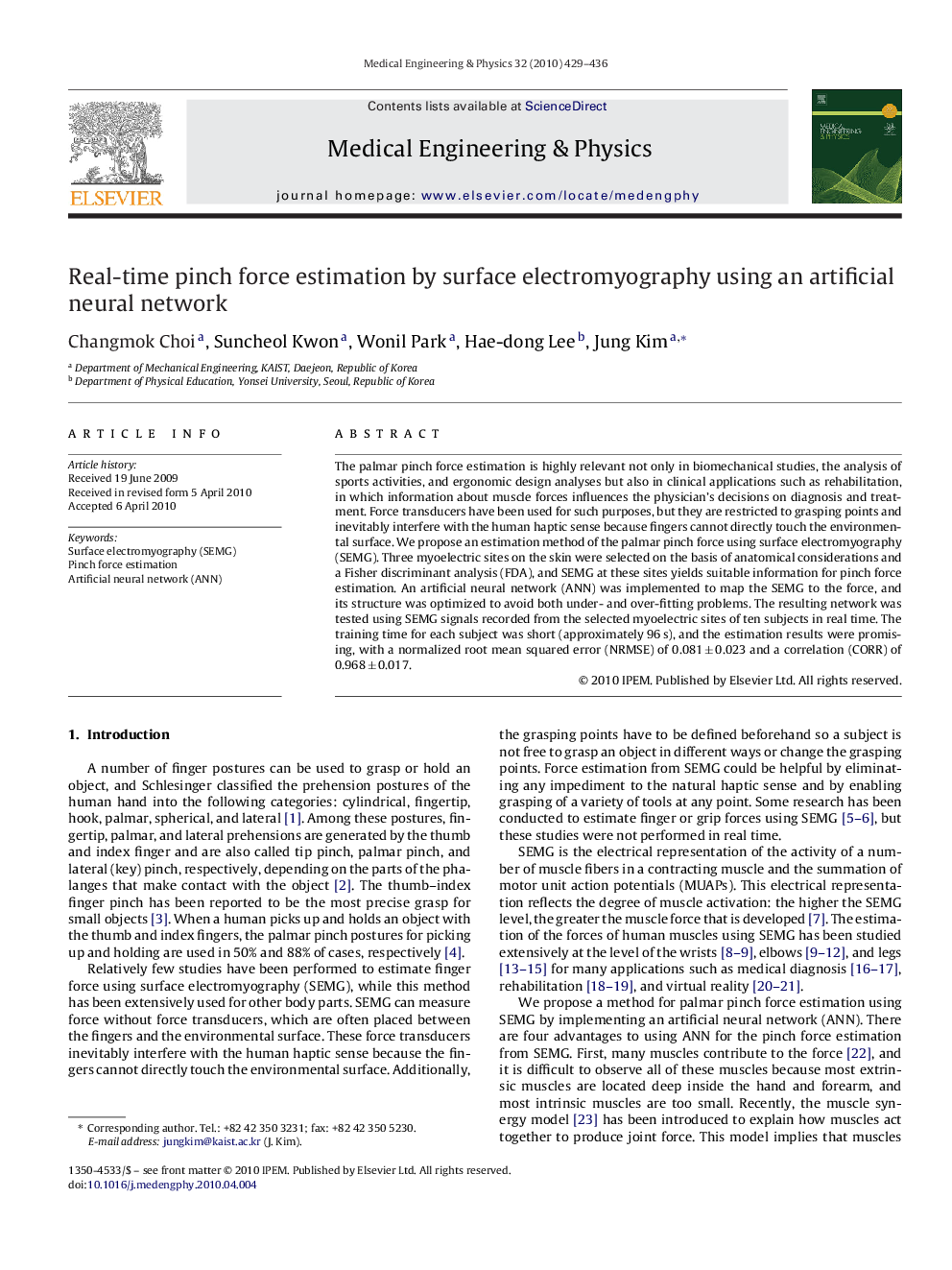| Article ID | Journal | Published Year | Pages | File Type |
|---|---|---|---|---|
| 876669 | Medical Engineering & Physics | 2010 | 8 Pages |
The palmar pinch force estimation is highly relevant not only in biomechanical studies, the analysis of sports activities, and ergonomic design analyses but also in clinical applications such as rehabilitation, in which information about muscle forces influences the physician's decisions on diagnosis and treatment. Force transducers have been used for such purposes, but they are restricted to grasping points and inevitably interfere with the human haptic sense because fingers cannot directly touch the environmental surface. We propose an estimation method of the palmar pinch force using surface electromyography (SEMG). Three myoelectric sites on the skin were selected on the basis of anatomical considerations and a Fisher discriminant analysis (FDA), and SEMG at these sites yields suitable information for pinch force estimation. An artificial neural network (ANN) was implemented to map the SEMG to the force, and its structure was optimized to avoid both under- and over-fitting problems. The resulting network was tested using SEMG signals recorded from the selected myoelectric sites of ten subjects in real time. The training time for each subject was short (approximately 96 s), and the estimation results were promising, with a normalized root mean squared error (NRMSE) of 0.081 ± 0.023 and a correlation (CORR) of 0.968 ± 0.017.
